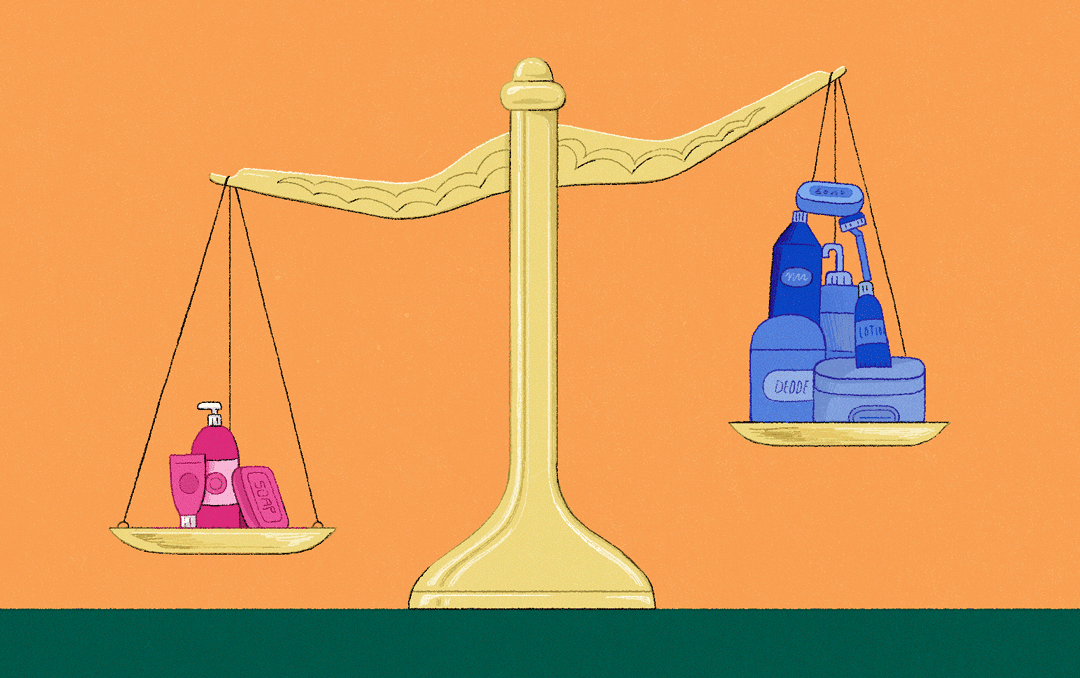
What Is the Pink Tax?
Share
We all know how expensive it is to buy all of the products we need to feel healthy, beautiful, and like our best selves, from makeup to dry cleaning. But, the issue goes beyond just the price of these things. Simply put, there’s inequality baked into being a female consumer. More specifically, you might have noticed that sometimes you have to pay more than men to basically get the same stuff at stores. Even the US Joint Economic Committee took notice of the issue because women have to pay more for similar goods and services to men, writing that women “are disadvantaged as consumers” because they are “frequently paying substantially more than men for similar goods and services.”
Because it’s so prolific and common, this phenomenon has an official name: It’s called the “pink tax.” While it is not a technical tax (such as the sales tax—aka the “tampon tax”—placed on feminine hygiene products), this price differential can often look and feel an awful lot like a tax on women just because they’re women. Women are charged more for their everyday purchases at drugstores and supermarkets like CVS and Target, even though they’re largely similar to products marketed to men. Everything that women buy as part of their routine is subject to a gender-based pricing system for everyday items and services that results in women paying an additional $1,351 per year.
With the gender pay gap, women already make less than men—at $0.79 to every $1.00 a man makes—which means women’s finances are already burdened by systemic issues in employment, hiring, and the like. This means women are impacted by gender-based discrimination in the marketplace both on the front-end—by making less than their male counterparts—and the back-end—through the pink tax that means they end up paying more for products that are mostly the same.
For example, the pink tax costs women their hard-earned cash on everyday self-care and health-based items, especially given the fact that women frequently make less than men. The pink tax can be seen in basic items like makeup, but also items like razors that are used no matter gender (and even bigger things like mortgages and car loans!). The Bic razor is the classic example: Somehow (well, probably intentionally) these identical razors cost different amounts based on gendered color schemes (i.e. the razor made in a color scheme traditionally marketed to women costs $1.08, while the “men’s” version costs 75 cents). Women pay 48% more for shampoo, and 40% more for basic haircuts. It even gets into gendered marketing for products like laxatives, where the “women’s” version—with the same active ingredient—might cost twice as much. Overall, the personal care industry, women’s products end up costing an average of 13% more.
At Orchyd, we believe in period equity. Period equity means that everyone experiencing a period can access and afford the products they need. The pink tax is a major systemic problem. While achieving period equity doesn’t end with dismantling the pink tax, but it is such an important part of ensuring everyone has access to all of the products we need to be healthy, well, and thriving. Let’s get all people who experience menstruation what they need to feel comfortable and safe, wherever they might be. From our period tracker to our smart case, we want to change how people relate to periods and, ultimately, create period equity, one person at a time.
